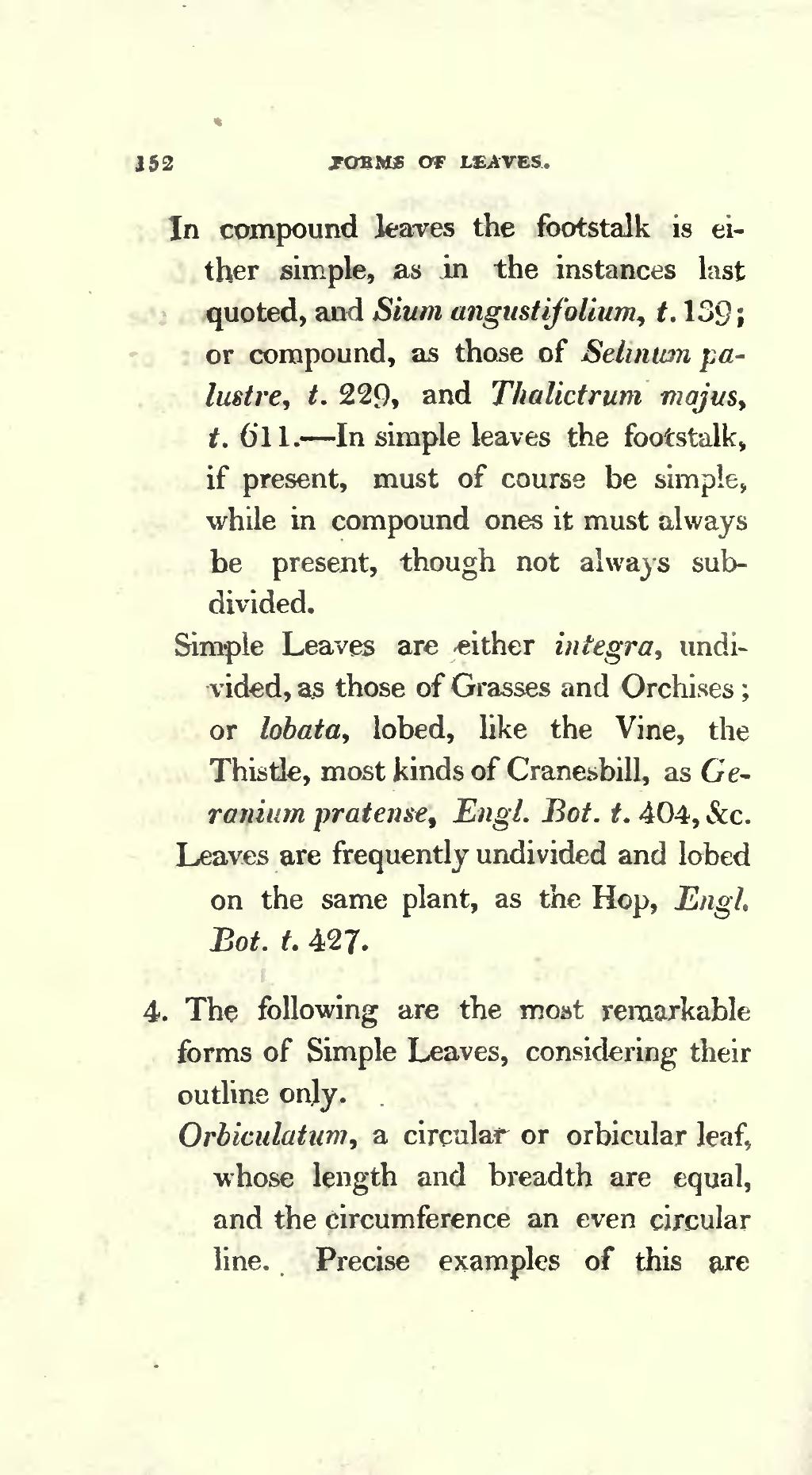In compound leaves the footstalk is either simple, as in the instances last quoted, and Sium angustifolium, t. 139; or compound, as those of Selinum palustre, t. 229, and Thalictrum majus, t. 611. In simple leaves the footstalk, if present, must of course be simple, while in compound ones it must always be present, though not always subdivided.
Simple Leaves are either integra, undivided, as those of Grasses and Orchises; or lobata, lobed, like the Vine, the Thistle, most kinds of Cranesbill, as Geranium pratense, Engl. Bot. t. 404, &c.
Leaves are frequently undivided and lobed on the same plant, as the Hop, Engl. Bot. t. 427.
4. The following are the moat remarkable forms of Simple Leaves, considering their outline only.
Orbiculatum, a circular or orbicular leaf, whose length and breadth are equal, and the circumference an even circular line. Precise examples of this are
